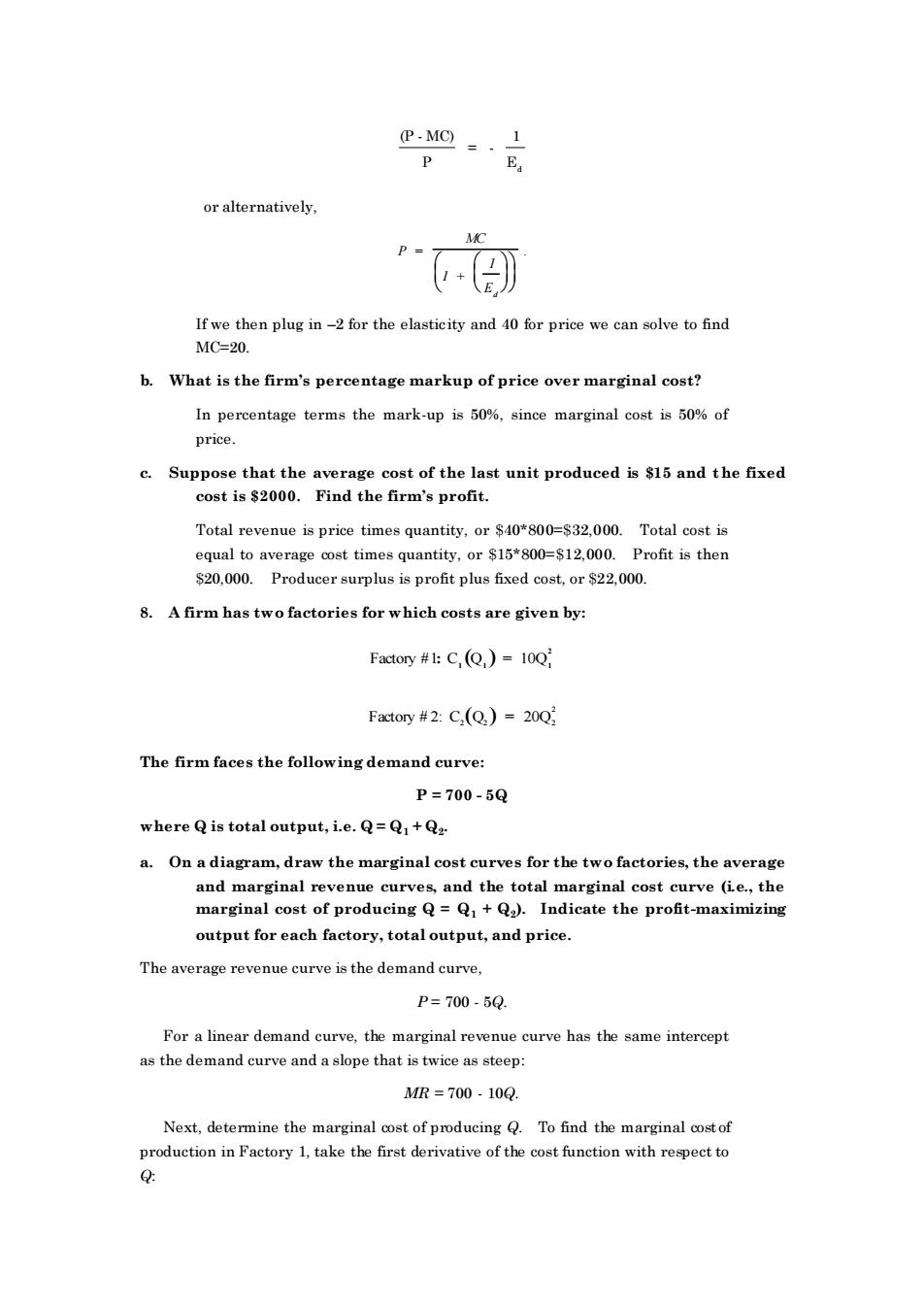正在加载图片...

or alternatively “ If we then plug in-2 for the elasticity and 40 for price we can solve to find MC=20. b.What is the firm's percentage markup of price over marginal cost? In percentage terms the mark-up is%since marginal o%of price. c.Suppose that the average cost of the last unit produced is $15 and the fixed cost is $2000.Find the firm's profit. Total revenue is price times quantity,or $40*800=$32.000.Total cost is equal to average cost times quantity,or $15*800=$12,000.Profit is then $20.000.Producer surplus is profit plus fixed cost.or S22.000. 8.A firm has two factories for which costs are given by: Factory#上C,(Q,)=10Qi Factory #2:C.(Q.)=20Q The firm faces the following demand curve: P=700-5Q where Q is total output,i.e.Q=Q+Q a.On a diagram,draw the marginal cost curves for the two factories,the average and marginal revenue curves,and the total marginal cost curve (ie.,the marginal cost of producing Q=Q+Q).Indicate the profit-maximizing output for each factory,total output,and price. The average revenue curve is the demand curve P=700-5Q For a linear demand curve.the marginal revenue curve has the ame intercept as the demand curve and a slope that is twice as steep: MR=700.10Q Next.determine the marginal os of producing To find the marginal of production in Factory 1,take the first derivative of the cost function with respect to(P - MC) P = - 1 Ed or alternatively, P = MC 1 + 1 Ed . If we then plug in –2 for the elasticity and 40 for price we can solve to find MC=20. b. What is the firm’s percentage markup of price over marginal cost? In percentage terms the mark-up is 50%, since marginal cost is 50% of price. c. Suppose that the average cost of the last unit produced is $15 and the fixed cost is $2000. Find the firm’s profit. Total revenue is price times quantity, or $40*800=$32,000. Total cost is equal to average cost times quantity, or $15*800=$12,000. Profit is then $20,000. Producer surplus is profit plus fixed cost, or $22,000. 8. A firm has two factories for which costs are given by: Factory #1: C1 Q1 ( ) = 10Q1 2 Factory # 2: C2 Q2 ( ) = 20Q2 2 The firm faces the following demand curve: P = 700 - 5Q where Q is total output, i.e. Q = Q1 + Q2 . a. On a diagram, draw the marginal cost curves for the two factories, the average and marginal revenue curves, and the total marginal cost curve (i.e., the marginal cost of producing Q = Q1 + Q2 ). Indicate the profit-maximizing output for each factory, total output, and price. The average revenue curve is the demand curve, P = 700 - 5Q. For a linear demand curve, the marginal revenue curve has the same intercept as the demand curve and a slope that is twice as steep: MR = 700 - 10Q. Next, determine the marginal cost of producing Q. To find the marginal cost of production in Factory 1, take the first derivative of the cost function with respect to Q: